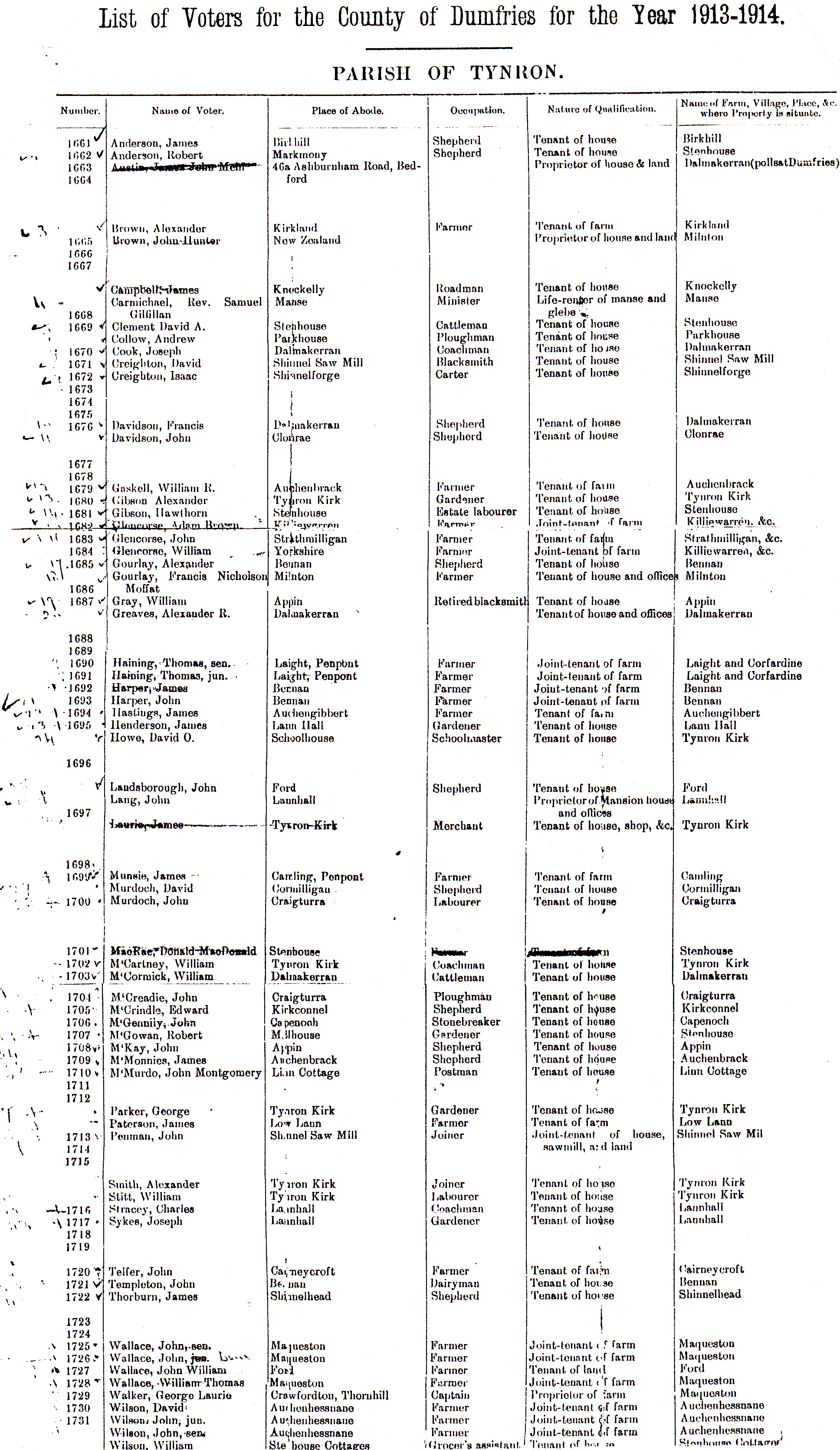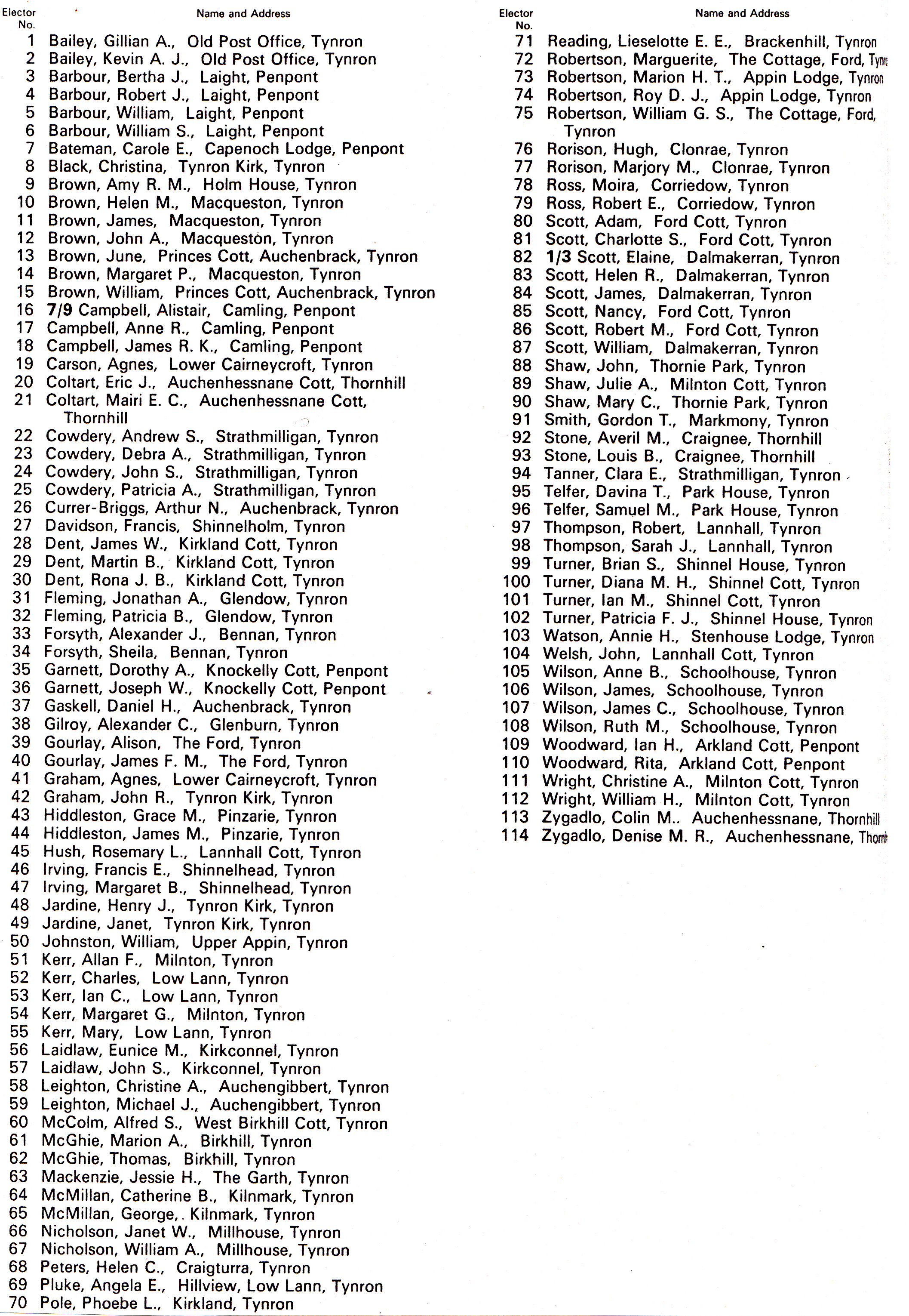The first census of the parish was taken by Alexander Webster in 1755, as things were improving in Tynron:
1755 464 including 92 and four-fifths fighting men.
1793 500
1801 563
1811 574 Culmination of Improvements and farming expansion.
1821 513 Post-war decline, reduced prices and increase in farm size.
1831 493
It is interesting that Tynron was one of only two parishes in Dumfriesshire showing a population reduction 1801-31. Glencairn increased by 665 and Penpont by 266 in that same period.
1851 482
1861 446
1871 381 Drift to towns and cities. Less farm workers needed.
1881 416 Gentry houses empty in census month of April.
1891 359
1901 334
1911 309 Continual drift away from the land.
1921 315
1931 295 Mechanisation of farms.
1951 244
1961 205
1971 166 Forestry taking up agricultural land, but providing few, if any, jobs.
1991 estimated 140 folk in Tynron Glen, the lowest population of any parish in Dumfriesshire. Can this figure get any lower? There are few jobs locally, but as Tynron is a desirable place of residence, surely numbers cannot drop further?
These figures include the part of the parish up the Scaur, but not the part of the Shinnel Glen in Keir parish. The total population of Tynron Glen has always been therefore slightly less than the figures above.
In 1801 there were 101 inhabited houses and 5 uninhabited. 336 people were employed in agriculture, 27 in trade, manufacture or handicraft.
In 1831 there were 90 inhabited houses, ie 5½ people per house. There were 80 people in the village. 170 children under 15 lived in the glen.
In 1990 there are 58 inhabited houses with about 140 people, i.e. less than 2½ people per house. The houses were much smaller in 1831!
The electoral rolls for 1913 and 1988 are printed here below. They are a treasure trove of information. In 1913 there were 66 voters on the list, all men, of course! Some women got the vote in 1918. In 1988 there were 114 voters. Not many surnames are on both lists.

